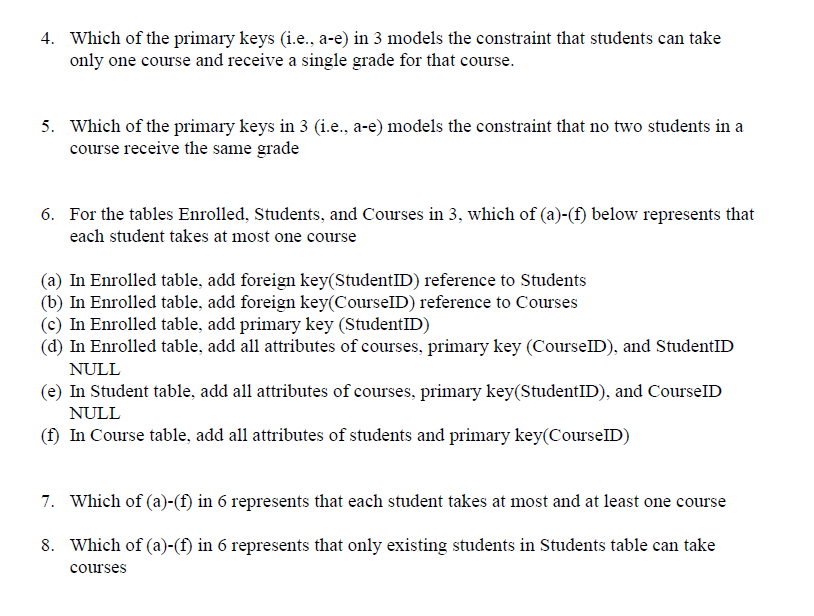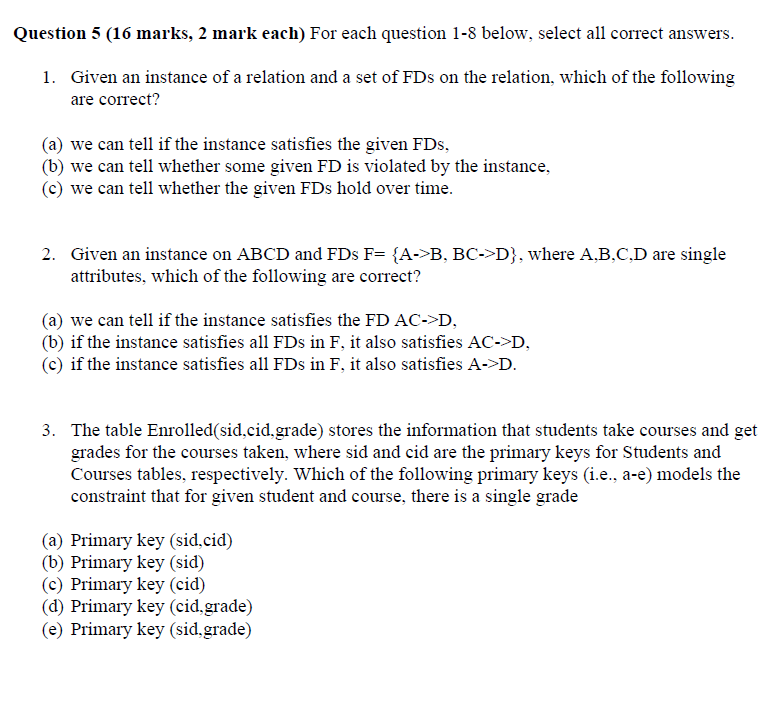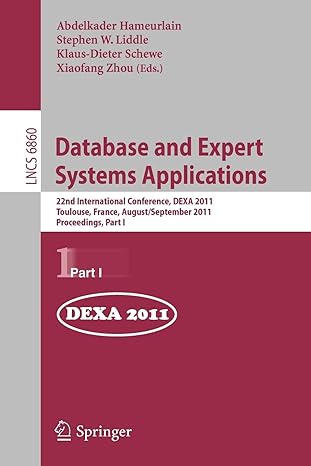Question
Q. For each question 1-8 below, select all correct answers 1. Given an instance of a relation and a set of FDs on the relation,
Q. For each question 1-8 below, select all correct answers
1. Given an instance of a relation and a set of FDs on the relation, which of the following are correct? (a) we can tell if the instance satisfies the given FDs, (b) we can tell whether some given FD is violated by the instance, (c) we can tell whether the given FDs hold over time. 2. Given an instance on ABCD and FDs F= {A->B, BC->D}, where A,B,C,D are single attributes, which of the following are correct? (a) we can tell if the instance satisfies the FD AC->D, (b) if the instance satisfies all FDs in F, it also satisfies AC->D, (c) if the instance satisfies all FDs in F, it also satisfies A->D. 3. The table Enrolled(sid,cid,grade) stores the information that students take courses and get grades for the courses taken, where sid and cid are the primary keys for Students and Courses tables, respectively. Which of the following primary keys (i.e., a-e) models the constraint that for given student and course, there is a single grade (a) Primary key (sid,cid) (b) Primary key (sid) (c) Primary key (cid) (d) Primary key (cid,grade) (e) Primary key (sid,grade)
4. Which of the primary keys (i.e., a-e) in 3 models the constraint that students can take only one course and receive a single grade for that course. 5. Which of the primary keys in 3 (i.e., a-e) models the constraint that no two students in a course receive the same grade 6. For the tables Enrolled, Students, and Courses in 3, which of (a)-(f) below represents that each student takes at most one course (a) In Enrolled table, add foreign key(StudentID) reference to Students (b) In Enrolled table, add foreign key(CourseID) reference to Courses (c) In Enrolled table, add primary key (StudentID) (d) In Enrolled table, add all attributes of courses, primary key (CourseID), and StudentID NULL (e) In Student table, add all attributes of courses, primary key(StudentID), and CourseID NULL (f) In Course table, add all attributes of students and primary key(CourseID) 7. Which of (a)-(f) in 6 represents that each student takes at most and at least one course 8. Which of (a)-(f) in 6 represents that only existing students in Students table can take courses

Step by Step Solution
There are 3 Steps involved in it
Step: 1

Get Instant Access to Expert-Tailored Solutions
See step-by-step solutions with expert insights and AI powered tools for academic success
Step: 2

Step: 3

Ace Your Homework with AI
Get the answers you need in no time with our AI-driven, step-by-step assistance
Get Started


